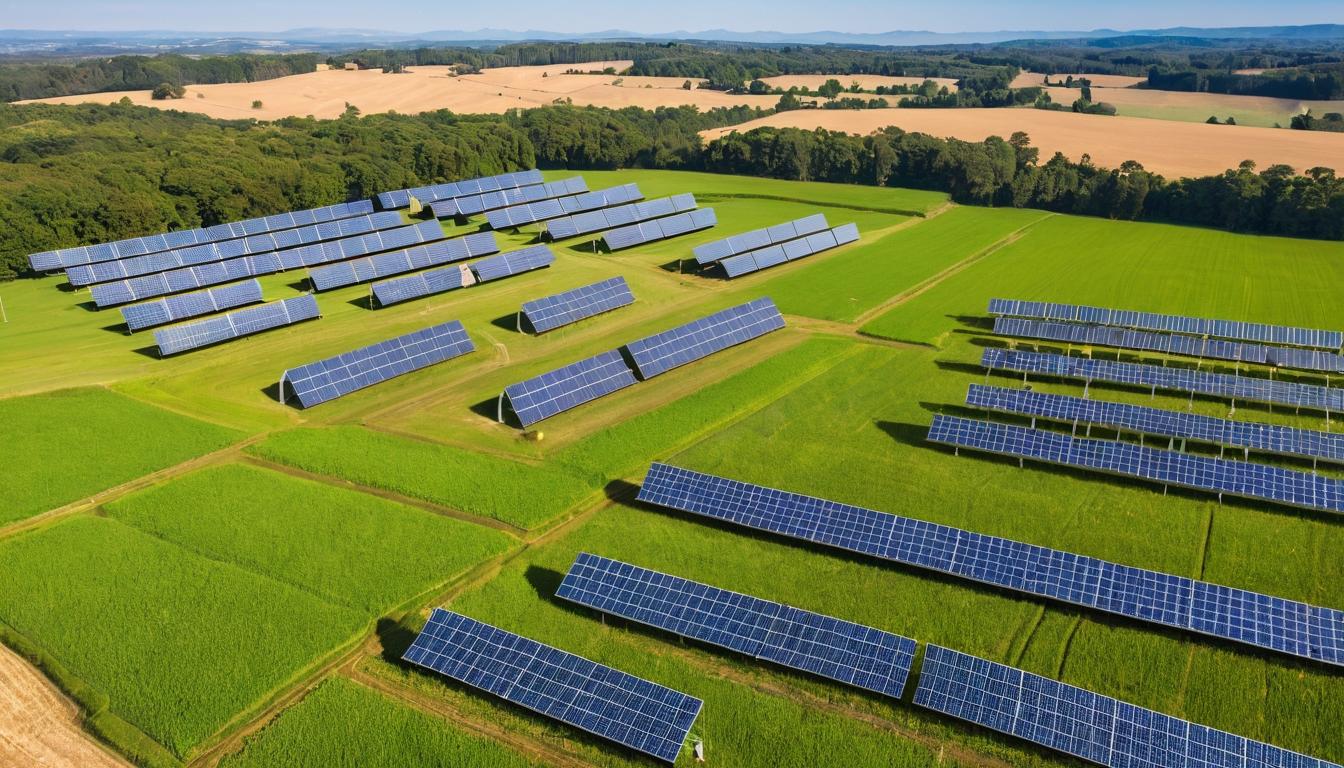When the International Energy Agency released its annual World Energy Outlook last year, even the most optimistic solar advocates were stunned. The agency that once famously underestimated solar growth now projects renewables will account for nearly half of global electricity generation by 2030. But here's the twist: the real story isn't happening in the projections—it's unfolding right now in laboratories, factories, and rooftops across the world, moving at a pace that continues to surprise even industry insiders.
What's driving this acceleration isn't just better panels or cheaper manufacturing. It's a perfect storm of technological breakthroughs, supply chain innovations, and policy shifts that have created conditions for exponential growth. Perovskite solar cells, once confined to academic journals, are now hitting commercial production with efficiencies that challenge conventional silicon. Meanwhile, bifacial panels that capture light from both sides are becoming standard on large-scale projects, boosting output by 15-20% without requiring additional land.
The manufacturing story reads like something from a science fiction novel. Companies are now producing solar panels with 90% less silver content than just five years ago, dramatically cutting costs while maintaining performance. This materials revolution extends beyond the panels themselves—new mounting systems require fewer components, installation robots are cutting labor costs by up to 50%, and smart inverters are turning solar arrays into grid-stabilizing assets rather than just power generators.
But the real game-changer might be what's happening behind the meter. Residential solar is undergoing its own quiet revolution, with new financing models making ownership accessible to households that previously couldn't afford the upfront costs. Community solar projects are exploding in popularity, allowing renters and those with shaded roofs to participate in the transition. The result? Solar adoption is becoming less about economics and more about accessibility—a fundamental shift in how we think about energy democracy.
The battery storage equation has flipped completely. Where once batteries were the expensive add-on that made solar systems marginally more useful, they're now becoming the centerpiece of home energy management. Today's lithium-ion systems cost 85% less than they did a decade ago, while new chemistries like lithium iron phosphate offer longer lifetimes and better safety profiles. The integration isn't just technical—it's financial, with time-of-use rates and virtual power plants creating new revenue streams for solar homeowners.
Utility-scale solar is rewriting the rules of energy economics. Projects now under development will deliver electricity at costs that were unimaginable just five years ago, with some bids coming in below $20 per megawatt-hour. This isn't just cheaper than fossil fuels—it's cheaper than the operating costs of existing coal and nuclear plants. The implications are profound: we're not just building new clean energy capacity; we're actively displacing existing dirty generation.
Perhaps the most overlooked aspect of the solar boom is what's happening with recycling and circular economy principles. As first-generation solar panels reach the end of their 25-30 year lifespans, companies are developing processes to recover 95% of the materials for reuse. This isn't just an environmental imperative—it's becoming an economic opportunity, with recycled silicon and silver finding their way into new panels at significantly lower costs than virgin materials.
The policy landscape has become almost unrecognizable from just a few years ago. The Inflation Reduction Act in the US has unleashed a manufacturing renaissance, with domestic solar production capacity expected to increase tenfold by 2026. Similar initiatives in Europe and Asia are creating regional supply chains that reduce dependence on any single country. This geographic diversification makes the solar industry more resilient to trade disputes and supply chain disruptions.
What's often missing from the conversation is how solar is transforming rural economies. From farmers leasing marginal land for solar arrays to former coal miners finding work in panel manufacturing, the energy transition is creating opportunities in places that have been left behind by previous economic shifts. The narrative of solar as an elite urban technology has been completely overturned—the fastest growth is now happening in rural communities and developing nations.
The integration challenges that once seemed insurmountable are being solved through innovation. Advanced forecasting algorithms predict solar output with 95% accuracy days in advance, while grid-forming inverters provide stability services that were once the exclusive domain of spinning turbines. The result is that grids can handle much higher penetrations of solar than previously thought possible, with some regions already regularly hitting 60-70% solar penetration during daylight hours.
Looking ahead, the most exciting developments might be in the spaces between traditional categories. Agrivoltaics—the practice of combining solar arrays with agriculture—is showing that we don't have to choose between food and energy production. In some cases, the partial shading from panels actually improves crop yields while reducing water requirements. Similarly, floating solar on reservoirs and canals is solving land use concerns while reducing evaporation losses.
The human dimension of this transition deserves more attention. Solar installers have become one of the fastest-growing occupations in many countries, with training programs creating pathways to middle-class careers without requiring four-year degrees. The industry's diversity is improving too, with women and minorities finding opportunities in what was once a predominantly white male field. This isn't just about panels and watts—it's about people and communities.
As we stand at this inflection point, it's clear that the solar revolution is about more than just clean energy. It's about reimagining our relationship with power—both electrical and political. The decentralized nature of solar challenges traditional utility models and empowers communities to take control of their energy futures. The technology that started as a niche environmental solution has become a catalyst for broader social and economic transformation.
The numbers tell one story—exponential growth, falling costs, expanding capacity. But the real story is about what becomes possible when we harness abundant, clean energy. From desalination plants powered entirely by solar to electric vehicle charging networks that run on sunlight, we're just beginning to glimpse the possibilities. The solar revolution isn't coming—it's already here, and it's moving faster than anyone predicted.
The solar revolution is accelerating faster than anyone predicted




